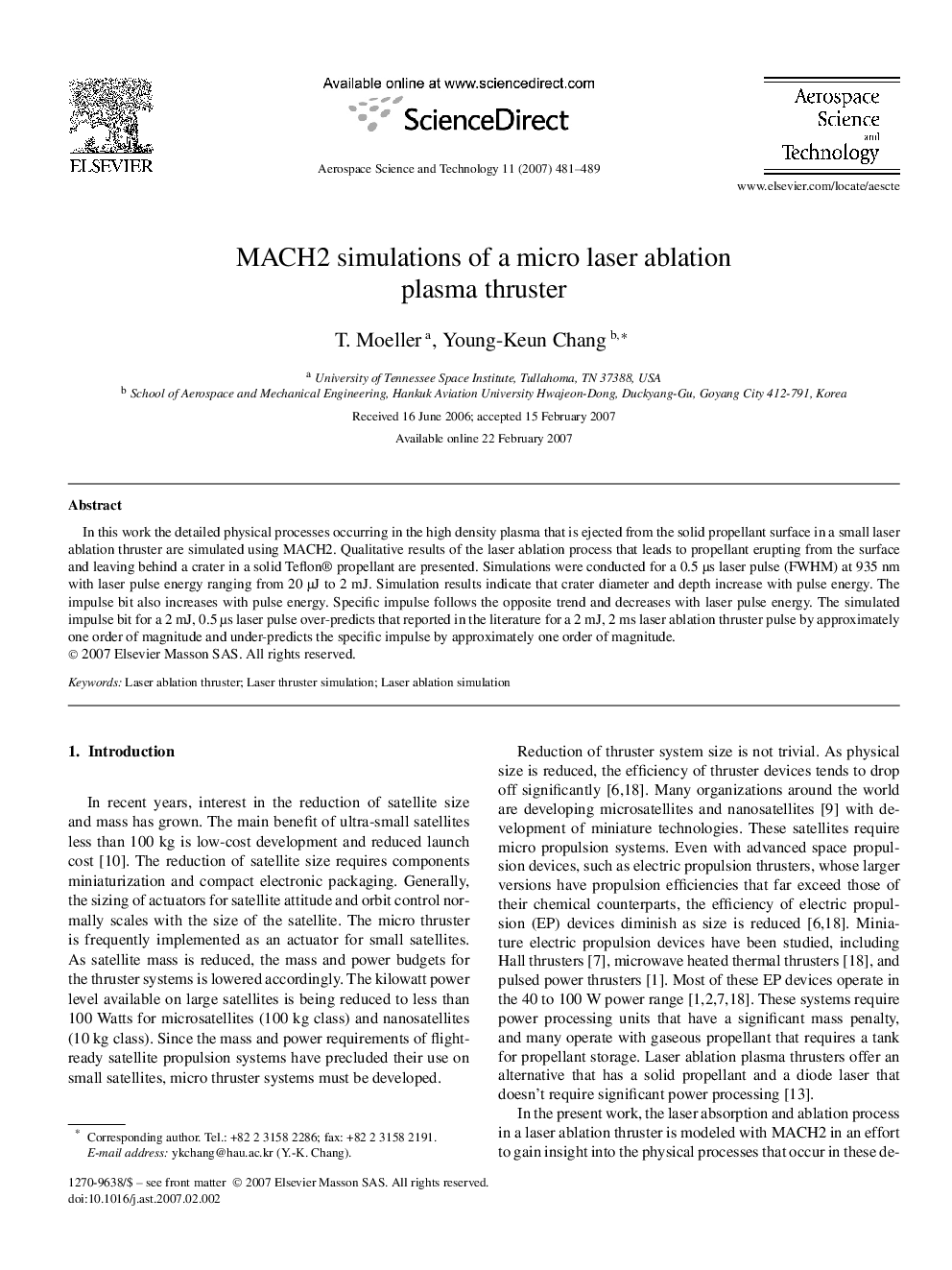| Article ID | Journal | Published Year | Pages | File Type |
|---|---|---|---|---|
| 1718700 | Aerospace Science and Technology | 2007 | 9 Pages |
In this work the detailed physical processes occurring in the high density plasma that is ejected from the solid propellant surface in a small laser ablation thruster are simulated using MACH2. Qualitative results of the laser ablation process that leads to propellant erupting from the surface and leaving behind a crater in a solid Teflon® propellant are presented. Simulations were conducted for a 0.5 μs laser pulse (FWHM) at 935 nm with laser pulse energy ranging from 20 μJ to 2 mJ. Simulation results indicate that crater diameter and depth increase with pulse energy. The impulse bit also increases with pulse energy. Specific impulse follows the opposite trend and decreases with laser pulse energy. The simulated impulse bit for a 2 mJ, 0.5 μs laser pulse over-predicts that reported in the literature for a 2 mJ, 2 ms laser ablation thruster pulse by approximately one order of magnitude and under-predicts the specific impulse by approximately one order of magnitude.
